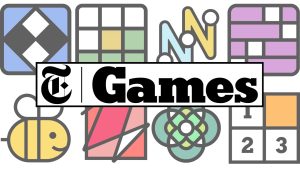Winter Finals in Review: How We Did and What We Learned
January 15, 2021
Palms sweating, Annika Gubser sits down at her desk and launches Zoom on her laptop. This will be her last set of final exams, or at least the last set she needs to worry about. She will be a second semester senior in the spring, and stakes will be low. But for now, she takes final exams in a school year like no other— from her bedroom. Miramonte’s student body experienced finals — distance learning style— for the first time in December, and both teachers and students alike learned about what worked and what didn’t.
First semester finals varied widely from traditional tests to projects to class discussions. Platforms also ran the gamut, though many teachers chose to administer finals on Canvas like regular tests. “My finals were pretty varied. One teacher made the final optional if we felt our grade needed that extra boost. I had projects in two of my classes, and an essay in another one,” Gubser said.
“In the two classes that assigned tests, one of them used Canvas to administer it and the other one used AP classroom,” freshman Leo Ding, who experienced his first set of finals online, explained. “I thought for the most part finals went as planned. I’m a freshman so I can’t compare it to previous finals,” Ding said. “All of my teachers used Canvas but some did assign a group discussion as a final instead of a test.”
In some ways, final exams, and testing as a whole this year, have changed the way education assesses students entirely. “In distance learning we have a great opportunity to rethink how we test the students and the purpose of finals,” Latin teacher Matt Davis remarked. “For Latin this past semester, the exams focused on the most essential skill in Latin, reading comprehension and understanding stories and written Latin. For the final exam, I kept the exam short (30-40 minutes) and asked short answer questions on a Latin story.”
Xavier Frippiat, who teaches Comparative Government/Economics and World History took an entirely different approach to traditional testing, creating open book multiple choice exams for both classes and one open book short answer question for World History.
Some finals went smoothly. “I was very pleased— the exams were fair and not surprising for the students,” Davis said. Others proved more difficult. In particular, tests administered on Canvas presented technical problems, such as the ones encountered in Comparative Government, a senior course. “I designed it in such a way that when the timer was up, then they’d be kicked off, which posed a problem if I wanted to grant more time,” Frippiat said. “So, my technical grasp of Canvas ‘Quiz’ features was not good enough for me to make changes on the spot… It required I re-invite student to a Friday makeup.”
With final exams potentially being online again next semester, winter finals served as a good test run. With one set of finals under our belts, what have we learned? Students seem to have reached a consensus that finals should veer away from traditional testing. “I would say this year try to stay away from tests entirely. Literally everyone I know did poorly on them and in a distance learning environment I don’t know if they accurately reflect the quality of work done throughout the semester,” Gubser said. Ding suggests including both traditional and new elements, such as tests that include aspects besides multiple choice.
And teachers? “I could break up the final into chunks prior to the finals day and leave the finals day for presentations,” Frippiat suggested. Or “admin[ister] a test with a time constraint and simply curve the final without trying to satisfy everyone’s need to answer all the questions but also add more time.”
Another solution would be to simply cut the testing time. “Keeping the exam focused and short without overloading the students allowed students to shine and display their knowledge,” Davis said.
Either way, students and teachers learned a lot from winter finals. Will we take them online next semester? Only time will tell. But if so, we know what to do.







